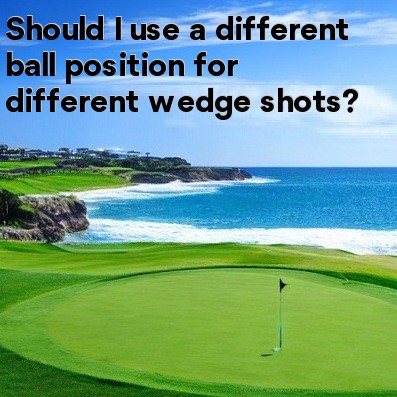
In golf, should I use a different ball position for different wedge shots?
As any golfer knows, having a solid short game is essential to lowering your scores. And when it comes to the short game, the wedge shots play a crucial role. But have you ever wondered if you should use a different ball position for different wedge shots? Let's explore this aspect of the game and see if it can make a difference in your performance.
When it comes to wedge shots, you'll typically be using three types of wedges – the pitching wedge, sand wedge, and lob wedge. Each of these wedges is designed to get the ball in the air and control its spin and trajectory. The distance you need to cover and the type of shot you want to execute will determine which wedge you'll use. But should the ball position change for each wedge?
The short answer is yes, the ball position should vary for different wedge shots. Here's why:
- Pitching wedge: The pitching wedge is usually used for shots that require less loft and more distance, such as approach shots from the fairway. For these shots, you'll want the ball positioned slightly back in your stance, closer to your right foot (for right-handed golfers). This promotes a more descending strike that produces a lower ball flight and allows for better control.
- Sand wedge: The sand wedge is primarily used for shots from greenside bunkers or for shots that require more loft and less distance. When playing these shots, you'll want the ball positioned slightly forward in your stance, closer to your left foot (for right-handed golfers). This allows for a more upward strike that helps the club slide under the ball, assisting in getting it out of the sand or adding height and spin around the greens.
- Lob wedge: The lob wedge, as the name suggests, is used when you need to hit a high, soft shot that lands softly and stops quickly. The ball position with the lob wedge will be even further forward than the sand wedge, allowing for an even steeper angle of attack and maximizing the loft and spin on the ball.
These differing ball positions for each wedge shot optimize the club's performance and allow you to execute the desired shot with greater precision and control. By adjusting the ball position, you can effectively change the launch angle, trajectory, and spin of the shot.
It's essential to practice these different ball positions with your wedges to develop a good feel for each shot. Experiment with the positions on the range and see how the ball flight changes with each adjustment. Over time, you'll develop a better understanding of how ball position affects your wedge shots.
Keep in mind that while adjusting ball position is important, it's not the only factor that affects your wedge shots. Factors like swing path, club selection, and grip pressure also play significant roles. So, make sure to focus on these aspects as well to achieve better results.
In conclusion, using a different ball position for different wedge shots is a recommended practice. By positioning the ball properly in your stance, you can optimize the performance of each wedge and have better control over the trajectory, spin, and distance of your shots. So, the next time you're faced with a wedge shot, remember to adjust your ball position accordingly and watch your short game flourish.





